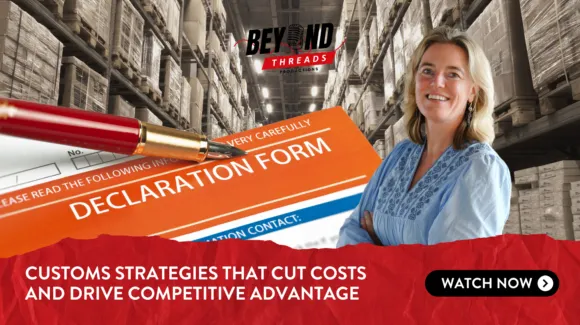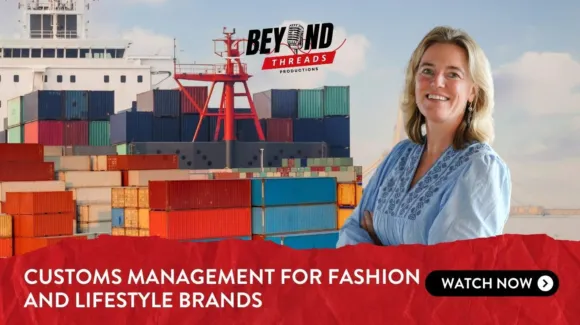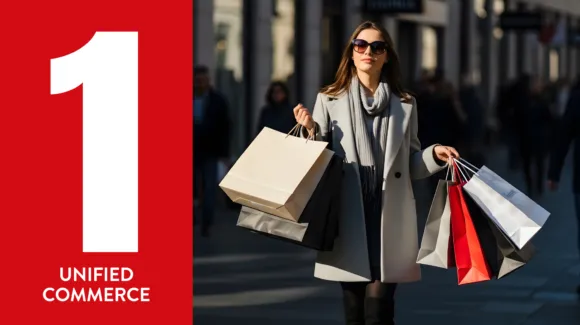From shifting US tariff policies to post-Brexit complexities, the global trade landscape has never been more unpredictable. Fashion brands across the spectrum face an unprecedented level of customs uncertainty that directly impacts their bottom line and customer experience. In our latest Beyond Threads podcast episode, Bleckmann Customs Director Katja Idsinga reveals how forward-thinking brands are using proactive strategies to overcome these challenges and secure a competitive advantage.
The new reality of cross-border commerce
In a world where customs duties can fluctuate overnight, financial planning has become an unprecedented challenge. For example, brands with manufacturing operations in Asia or South America must decide whether to absorb sharply increasing import costs or pass them on to customers. “The uncertainty is hitting brands hard,” explains Katja. “Companies run best when they have certainty about costs, but volatile duty rates – be it 10%, 30% or 100% – directly impact pricing strategies and competitive positioning.”
This uncertainty has the potential to create a ripple effect throughout the entire customer experience. Some brands may struggle to maintain competitive pricing while managing unpredictable cost structures, often forcing difficult decisions between margin preservation and market accessibility. In this landscape, proactive customs planning to reduce costs is indispensable – so what can brands do to adapt to the ‘new normal’?
Listen To Audio Only
From compliance burden to strategic advantage
For fast-growing fashion brands, a holistic perspective on customs management can deliver significant benefits. What was once viewed simply as a compliance burden is now recognised as a critical component of a competitive growth strategy. This requires brands to move from a reactive approach towards a more comprehensive framework.
For European brands, this may involve implementing dual sourcing strategies, exploring ‘nearshoring’ opportunities in countries like Portugal, Morocco and Turkey, or even leveraging bonded warehousing to maintain operational flexibility while limiting duty exposure. “We help customers work through the ‘what-ifs’,” says Katja. “Should you have dual storage facilities? Should you duplicate inventory between Europe and the US? Making the right strategic decisions on topics like these can determine market success.”
Data: The foundation of operational resilience
Behind every effective customs strategy lies robust data management. Brands that excel in uncertain markets maintain precise visibility into areas such as product origins, customer geography and return patterns. This granular understanding enables sophisticated decision-making about inventory placement and fulfilment strategies.
The stakes are particularly high in fashion retail, where 30-40% of products are typically returned to manufacturers. Without proper customs planning, cross-border returns can trigger double duty payments, creating unexpected cost exposures that erode profitability. “Data is key,” emphasises Katja. “You need to know exactly where your goods are coming from, where you’re shipping to and what your main customer base looks like. Only then can you make informed decisions about whether to, for example, import everything locally or maintain flexibility through solutions like bonded storage.”
A competitive edge in a complex landscape
As customs regulations become increasingly complex, the value of specialist expertise has never been higher. Katja brings over 25 years of customs experience across consultancy and import operations – a unique perspective that spans the entire customs ecosystem. “I’ve been on all sides of customs,” she notes. “With this combination of experiences, you can really understand the full picture. The financial impact of getting customs wrong can be significant, and expert help can make all the difference.”
Importantly, customs should not be treated as an isolated function. By taking a holistic approach, whereby compliance expertise integrates seamlessly with strategic supply chain planning, brands can prioritise both adaptability and efficiency. This way, regulatory requirements can inform business decisions about market entry, inventory management and customer service delivery. The brands that thrive will be those that view customs not as a cost centre to minimise, but as a strategic capability to optimise.
Press play on the Beyond Threads podcast to get the full story from Katja and discover her insights on how strategic customs management can help you overcome regulatory challenges and secure a long-term strategic advantage.















